
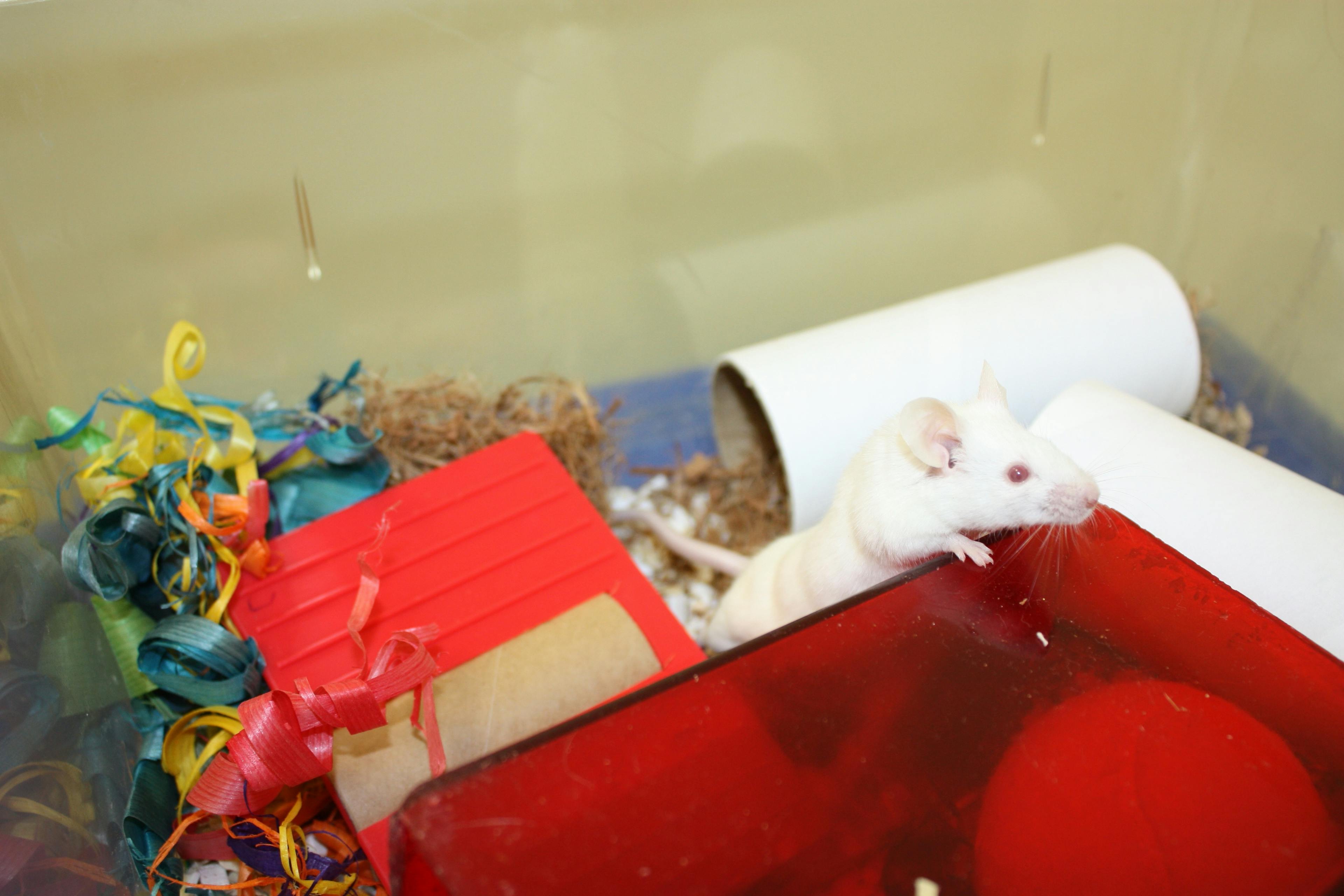
Housing
Housing of laboratory mice and rats is constrained by many factors important to both managing their welfare and being able to carry out scientific procedures.
Introduction
Housing of laboratory mice and rats is constrained by many factors important to both managing their welfare and being able to carry out scientific procedures. These include:
- Ability to undertake regular welfare checks and monitor individual animals
- Ability to identify and handle individual animals for procedures
- Ability to manage hygiene and achieve high levels of biosecurity
- Ability to manage breeding and maintain extensive colonies of genetically modified animals
- Constraints of space and time and ergonomic considerations for animal care staff
These factors have been the main drivers behind the current ‘shoebox’ style housing used for most mice and rats housed in the laboratory environment.
To achieve positive welfare, animals need the ability to express natural behaviours to a sufficient extent to avoid the development of negative affective states. Overt signs of the negative impacts of conventional housing systems include the development of stereotypic behaviours (active coping) or increased inactivity (passive coping). Providing animals with more space and complexity to their environment has positive impacts on their welfare but, more naturalistic housing, used 100% of the time, is challenging to implement alongside most scientific studies and the management of laboratory rats and mice. Adaptions to the home cage environment can provide enrichment without changing stocking densities or standard caging systems. Animals can also be maintained in the current standard caging but provided with access to highly enriched environments for brief periods of time using play pens. This supports positive welfare while also meeting the needs of the scientific objectives.
The laboratory environment is highly artificial with the potential to have major impacts on normal development and hence the scientific validity of the model which is generated. Animals are housed in high densities with limited access to space or diversity in their environment. They are usually weaned into age and sex matched groups impacting on social development and with IVC housing further restricting exposure to conspecific communications including vocalisations and pheromones.
Social Enrichment
Providing animals with access to conspecifics
Rats are highly social and naturally live in extended family groups. They will generally form stable social hierarchies in the lab environment and do not normally exhibit high levels of aggression. Less active than mice but more intelligent, rats particularly benefit from social enrichment and sensory diversity.
Mice are considered to be a social species and benefit from group housing but aggression in group housed male mice is a serious welfare concern. Although we assume group housing is better than individual housing, evidence to support this is limited. Studies in the 1960s by Peter Crowcroft challenges the idea that mice are highly social, with his work revealing how dominant male mice exclude other males from their territory. We have used our objective methods to quantify the affective state of male mice in single versus group housing conditions as well as conventional versus IVC systems. These studies suggest male mice prefer to live on their own and do not like IVC systems. There are also the potential for interactions between the cage environment and group size. Group housed male mice housed with high levels of enrichment may be more predisposed to fighting to dominate these more valued resources. Mice are also normally housed at much lower temperatures than their native habitat and may seek the company of other mice to enable more efficient maintenance of core body temperature. Further studies in both male and female mice are needed to better understand the sociability of mice, how these interact with the cage environment and associated welfare implications.
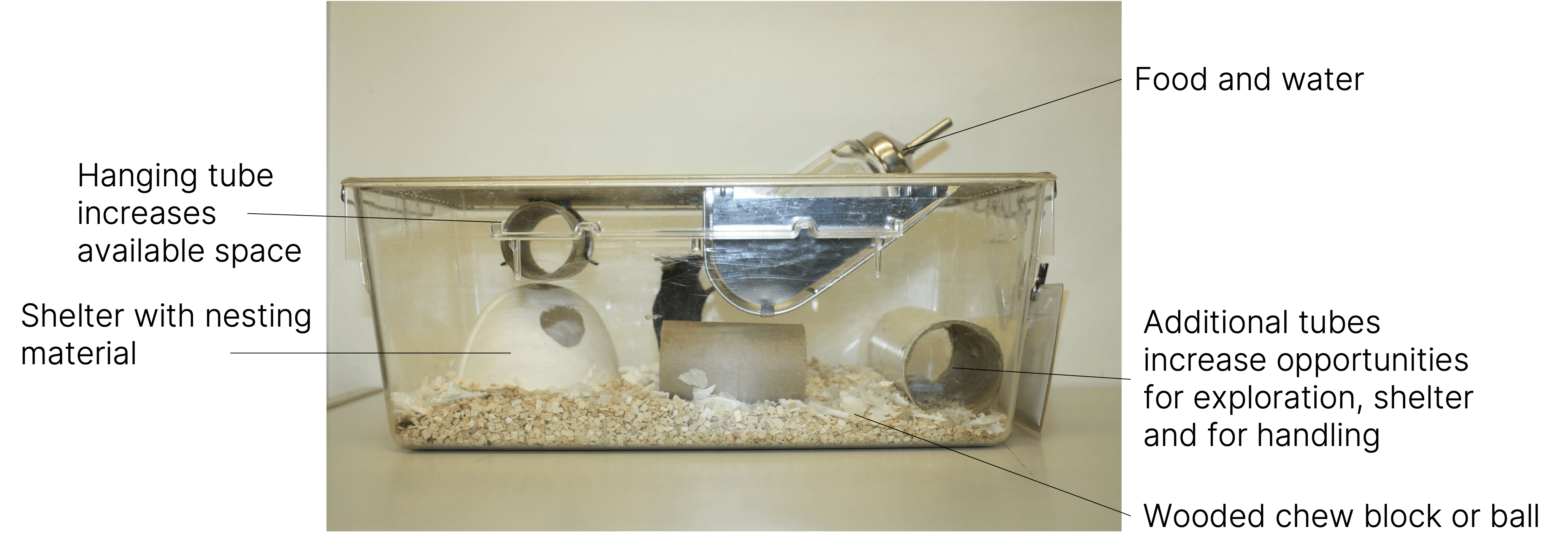
An example of an enriched cage for mice
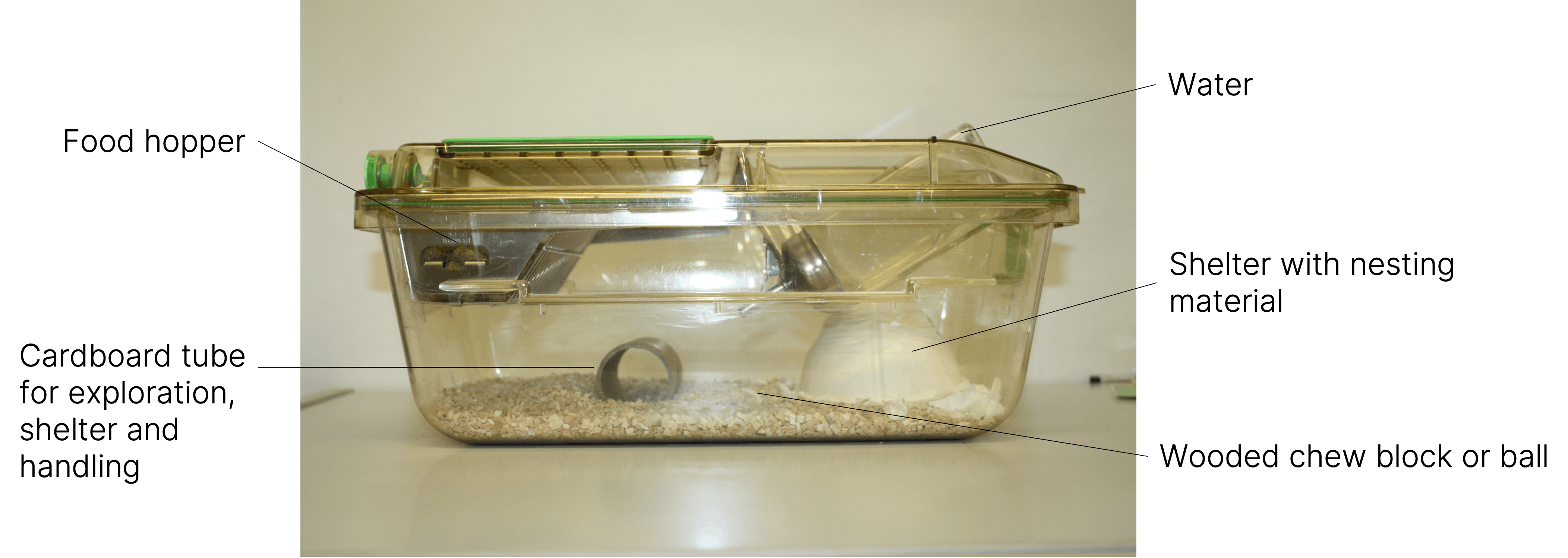
An example of an enriched IVC cage for mice. Note that depending on the type of IVC used, space for enrichment may be more restrictive than conventional caging. Providing shelter and nesting material is a minimum to enable mice to maintain their body temperature in an environment with increased air flow.
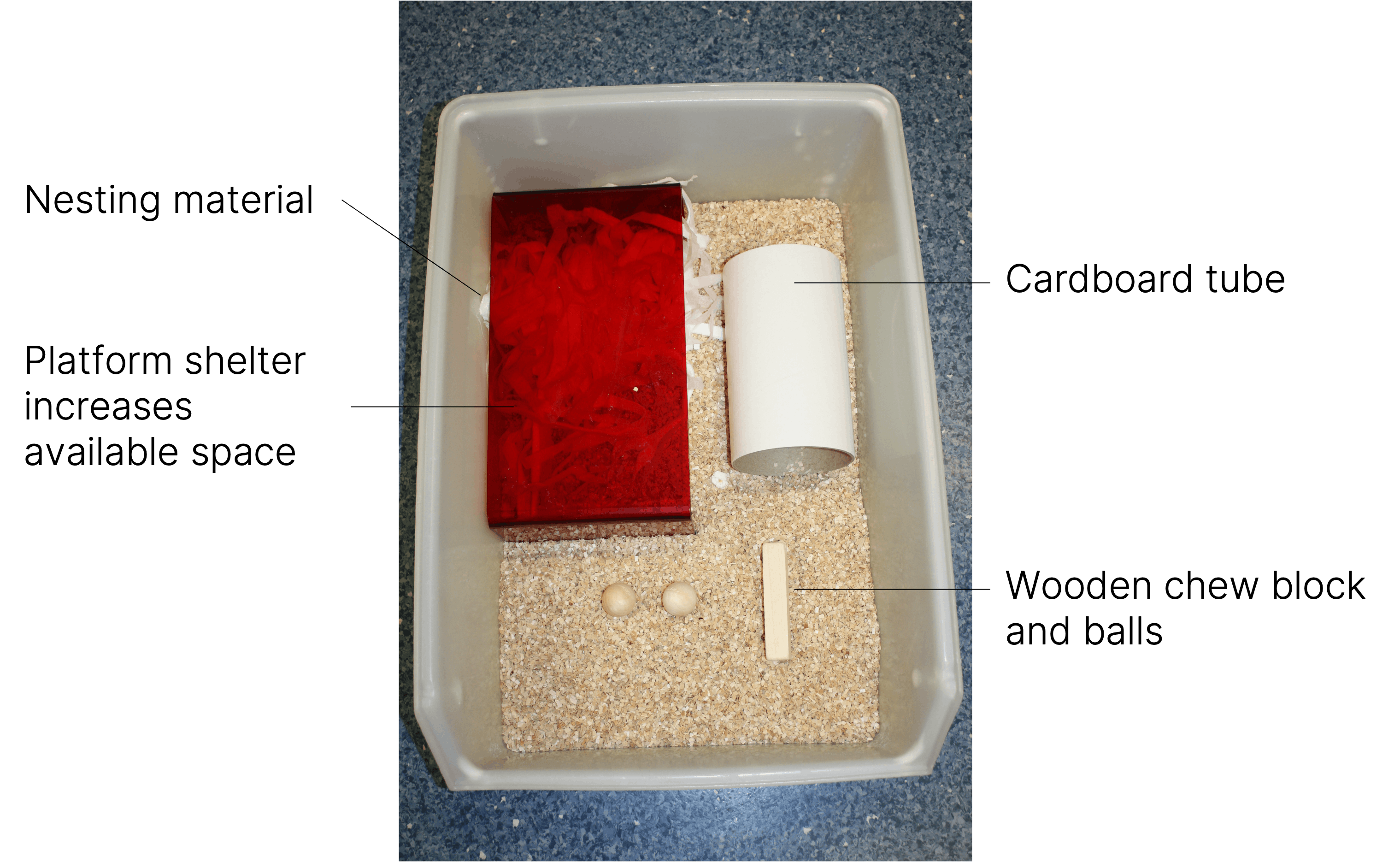
An example of an enriched cage for rats

Individual housed male mice
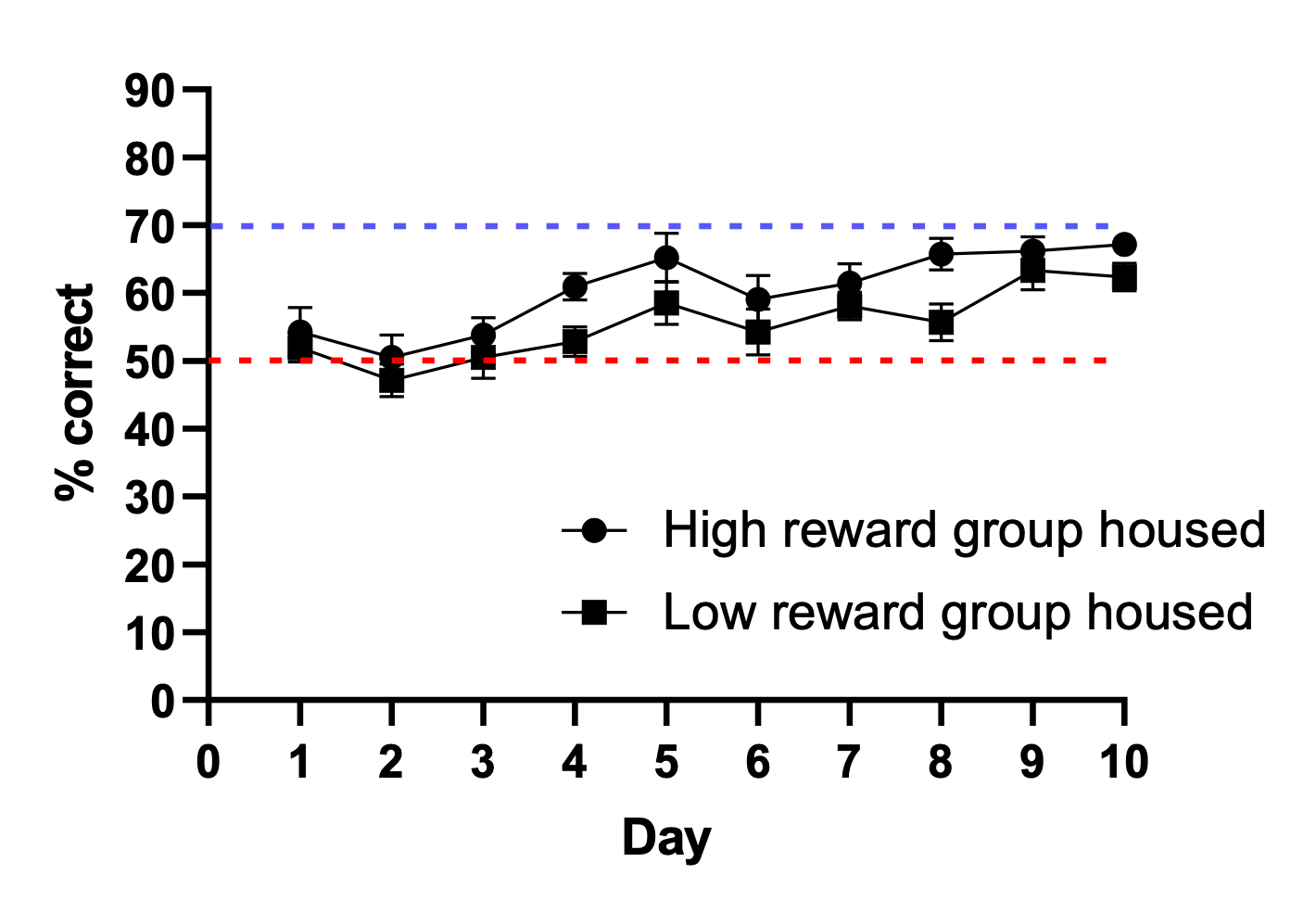
Group housed male mice

Male mice prefer to live on their own (and they prefer conventional housing systems): Using our objective methods to quantify core affective state, we have been able to show that male mice are in a more positive affective state when housed individually.
*A positive reward bias is seen when learning for the high value reward is faster and/or greater over time than for a low value reward. The magnitude of reward bias has been linked to affective state.
In these data, group housed male mice do not develop a positive reward bias indicating their core affective state is negative.
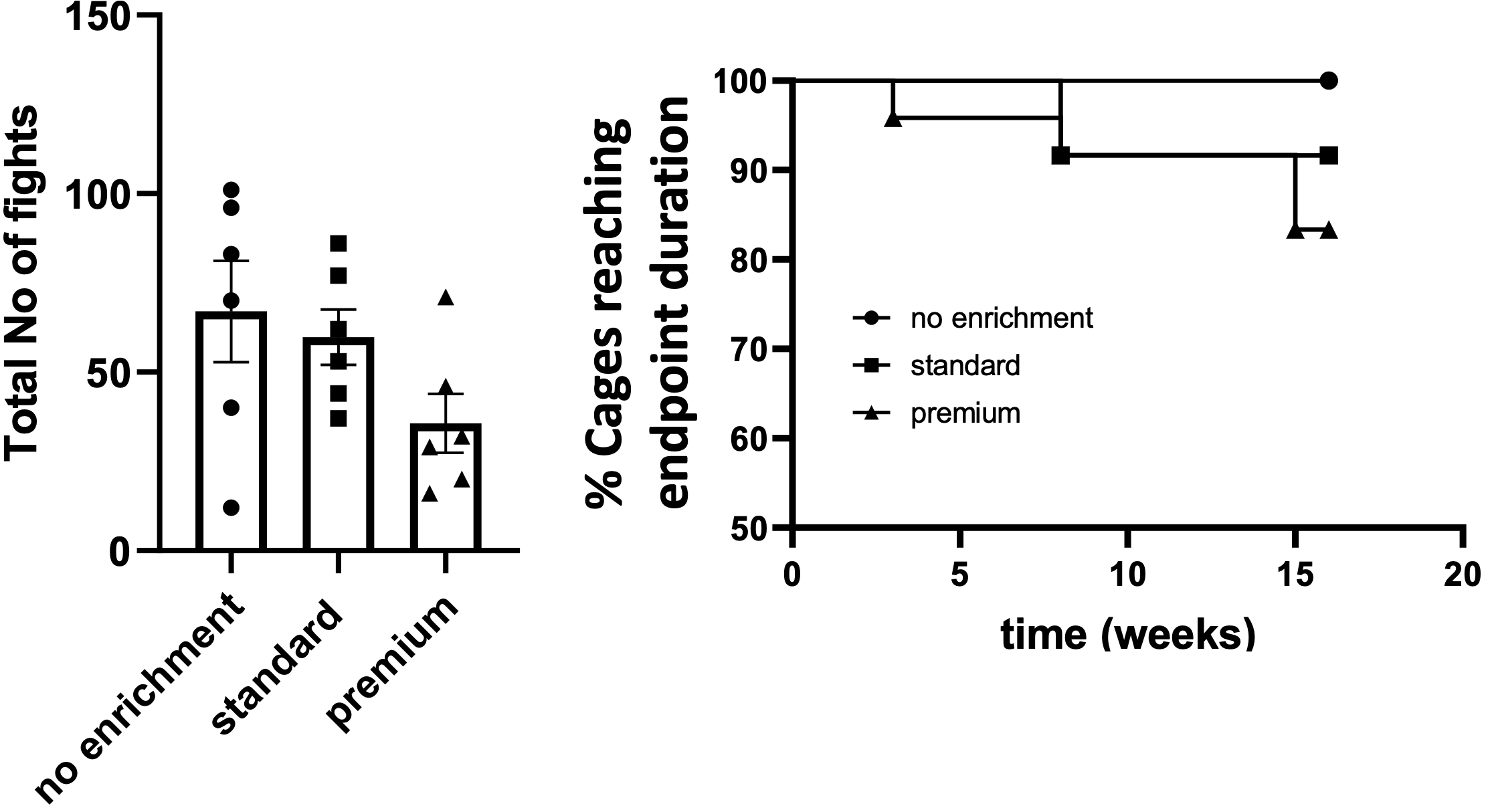
The effects of enrichment on group housed male mouse aggression is complicated with evidence that low level fighting is reduced by providing high levels of enrichment (left panel), but injurious fighting is more likely to occur in highly enriched cages (right panel) possibly due to competition for resources.
Environmental Enrichment
Despite the restrictions of the standard laboratory caging system, it is still possible to provide environmental enrichment. Objective assessments of the value of different enrichment resources is still limited but strategies which may positively impact on welfare are listed below.
Maximising available space
The current caging systems may be limited in overall dimensions but can be enhanced through provision of environmental enrichment. For most laboratory rats and mice, provision of nesting material, some form of shelter and chew blocks are standard practice and a major welfare improvement over barren caging systems.
Providing shelter and nesting material
This is very important for mice to enable them to maintain their body temperature. Mice naturally live in much warmer environments than the standard lab conditions with a thermal neutral zone estimated to be 28oC. Both mice and rats benefit from shelters where they can feel safe.
Adding different levels and utilising height
Without changing the overall cage dimensions, the available space can be increased by adding additional levels and platforms to the cage. Hanging tubes from the cage lid may be particularly useful in mice so they can escape conflict. Rats also spend a lot of the time rearing on their hind legs and so caging system which provide sufficient height to enable the expression of these behaviours are beneficial.
Playpens
A playpen provides a compromise where animals are housed in standard enriched cages (or even barren cages if needed for the scientific objective) but then providing access to a highly enriched environment for a short period of time. For rats, a playpen can include social enrichment where similar age and sex animals can be given shared access. Playpen access with or without conspecifics can be particularly useful for animals which require single housing for scientific reasons. For mice, playpen access should only be with cage mates or individually and there may be an increased risk of fighting in group housed male mice due to competition for resources. Observing animals during their time in the playpen is helpful in case fighting occurs.
Species relevant sensory stimuli
As humans our dominant senses are sight and sounds but for a prey animal, these senses are focused on predator avoidance. Rodents have excellent olfactory and tactile sensory perception, and these senses dominate in their social and environmental interactions. They also spend much of their time in their natural environment foraging. Most laboratory management systems are very limited in these domains with standardised cage furniture and bedding used and single sex environments from weaning. We know from novel object recognition tasks that both rats and mice will naturally spend more time exploring novel objects suggesting these are a valued resource
- Pheromones enrichment – provision of materials with odours from conspecifics of both sexes
- Olfactory enrichment – providing objects which have been treated with different scents e.g. wood balls, tea strainers
- Tactile enrichment – providing more varied textures in the environment and alternating when these are used
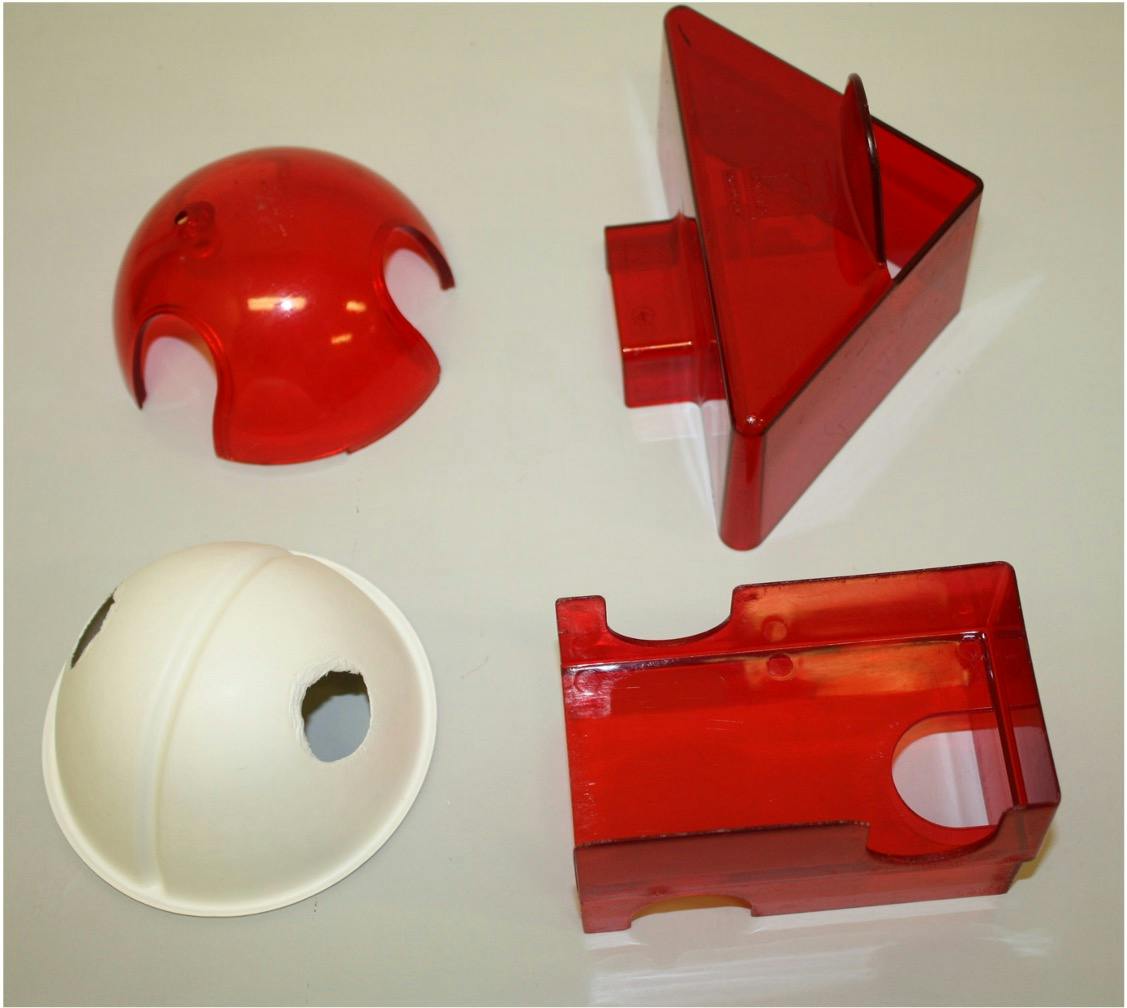
Commercially available shelters
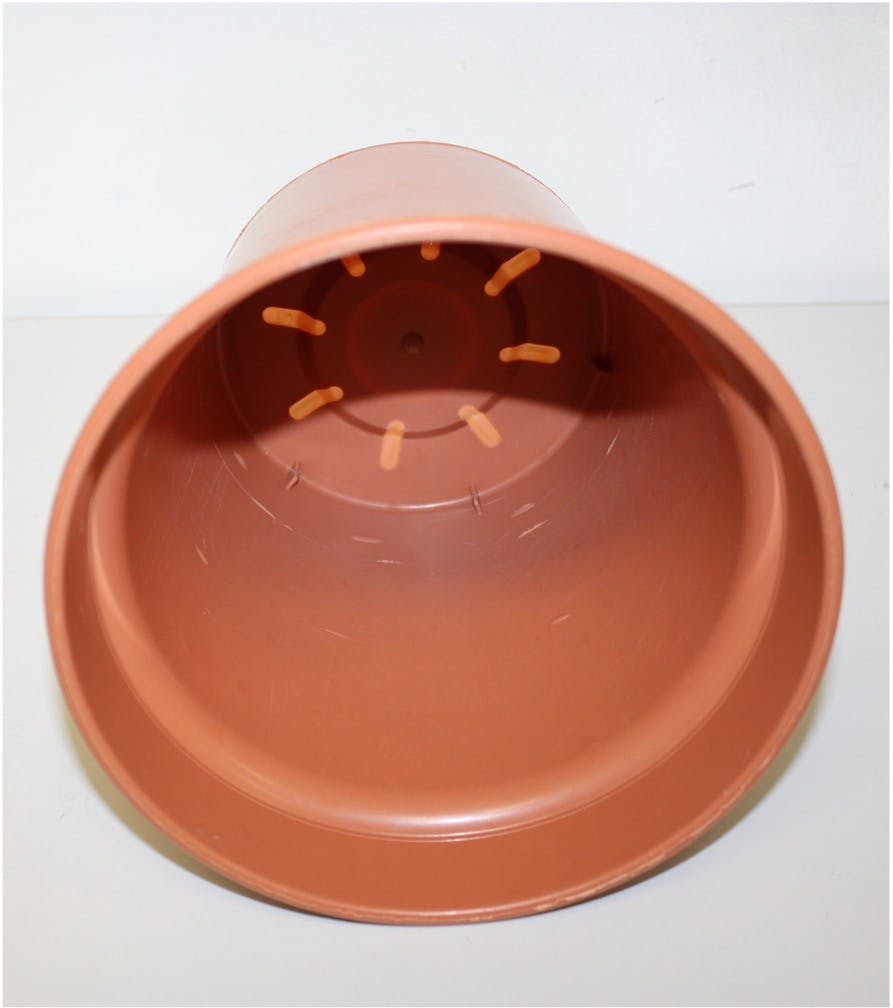
Flower pots

Nestlets

Wooden chew blocks or balls (can also be scented)
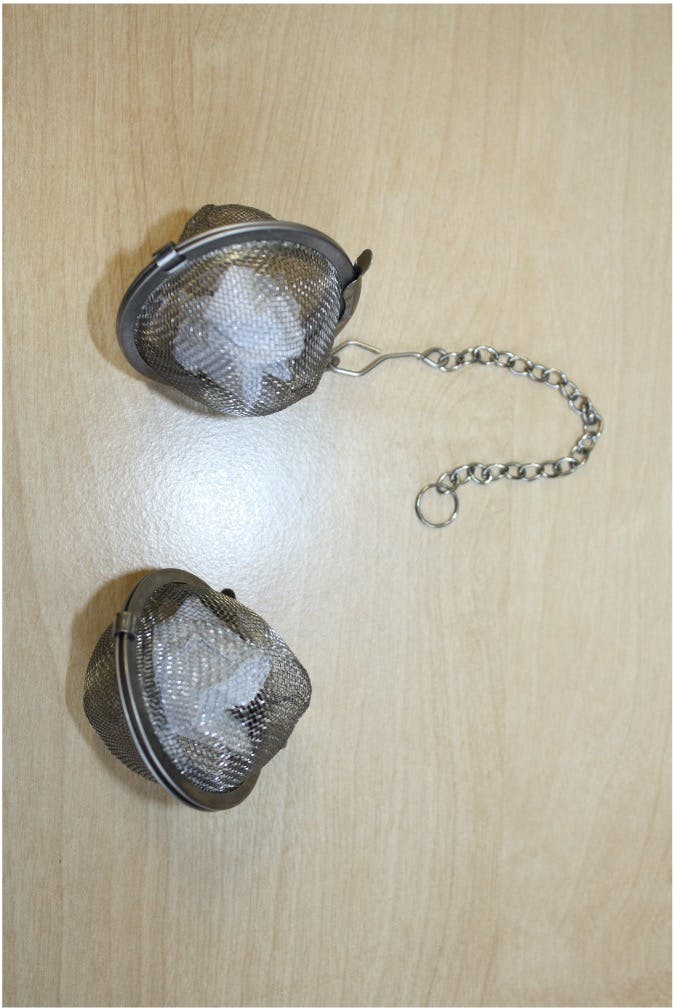
Tea strainer with scented paper
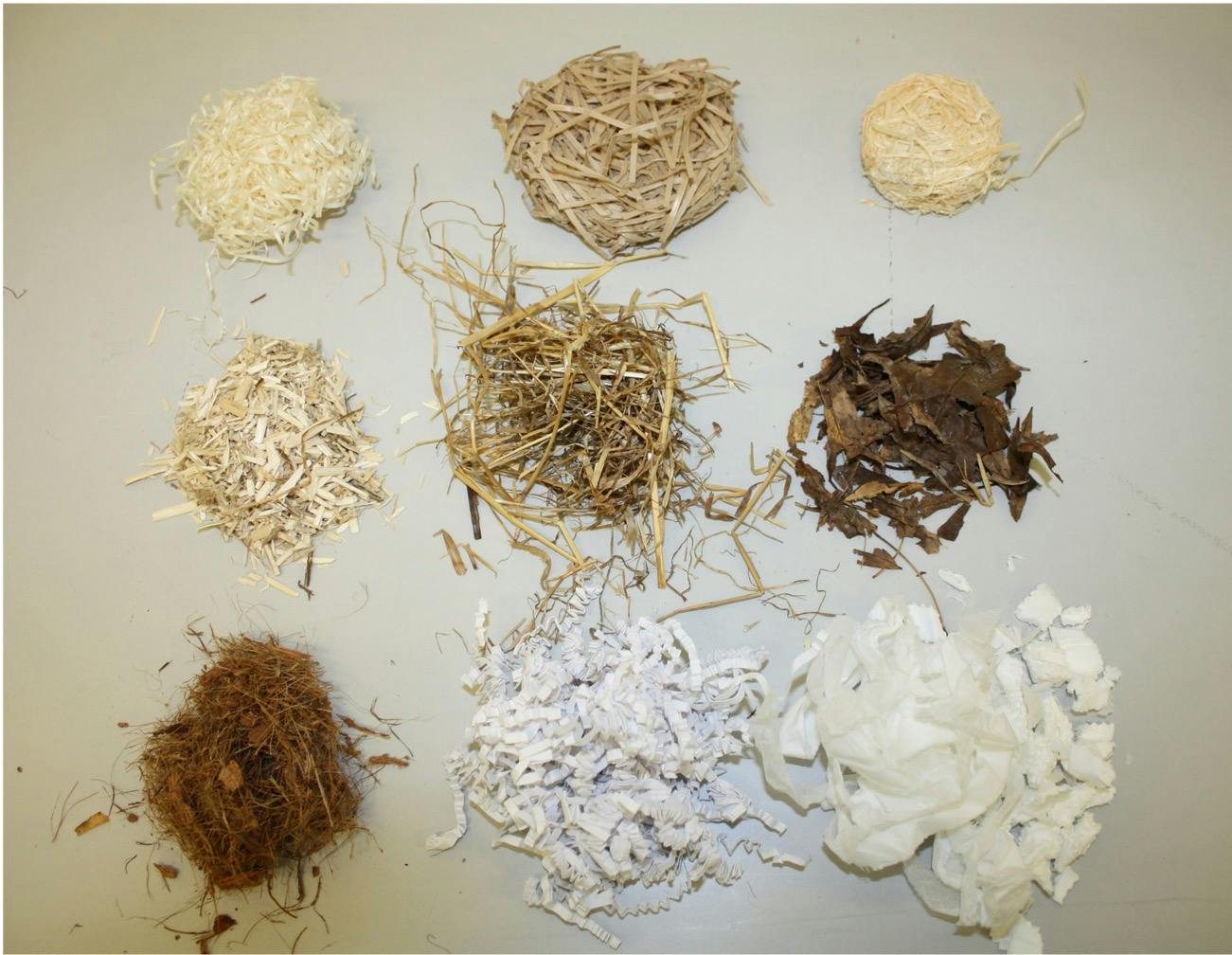
Varied nesting materials
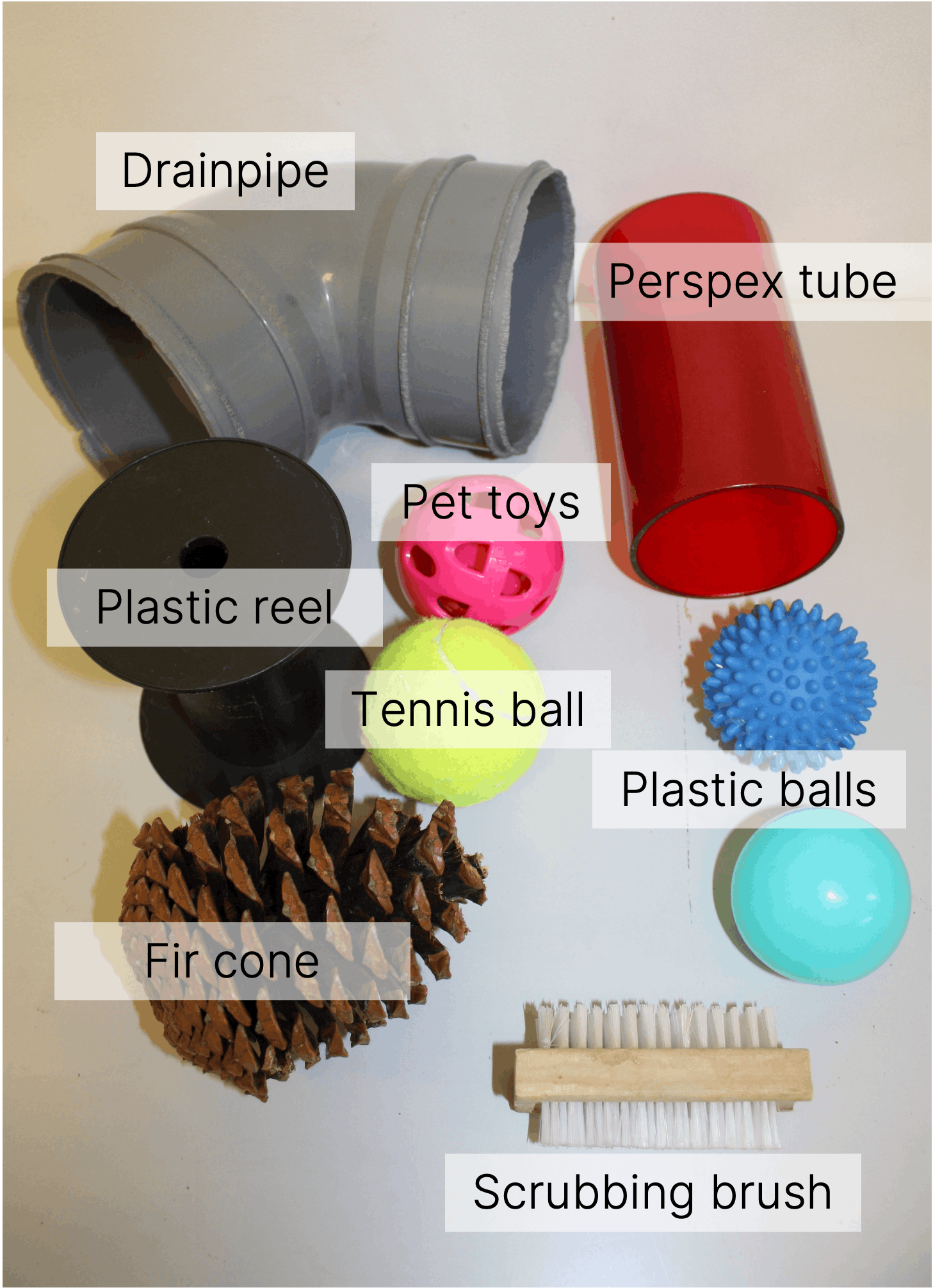
Miscellaneous enrichment materials
Examples of different types of enrichment suitable for home cages or playpens (items are autoclaved before use to maintain biosecurity).
Objects need to be safe and checked regularly for damage to avoid possible injury
An example of a rat play pen
This video shows a group of female Wistar rats in a play pen containing a range of objects including platforms, tubes, fir cones, balls and flowerpots. The animals can be seen exploring the objects and engaging in a range on natural social behaviours.
An example of a mouse playpen
This video shows two female CD1 mice in a play pen made within a two-tier rat cage. The cage contains a range of objects of different textures to provide a diverse sensory environment.
Male rats in a ball pit
This video shows a group of male Wistar rats in a ball pit. The animals can be seen exploring in amongst the balls as well as interacting with the other animals.
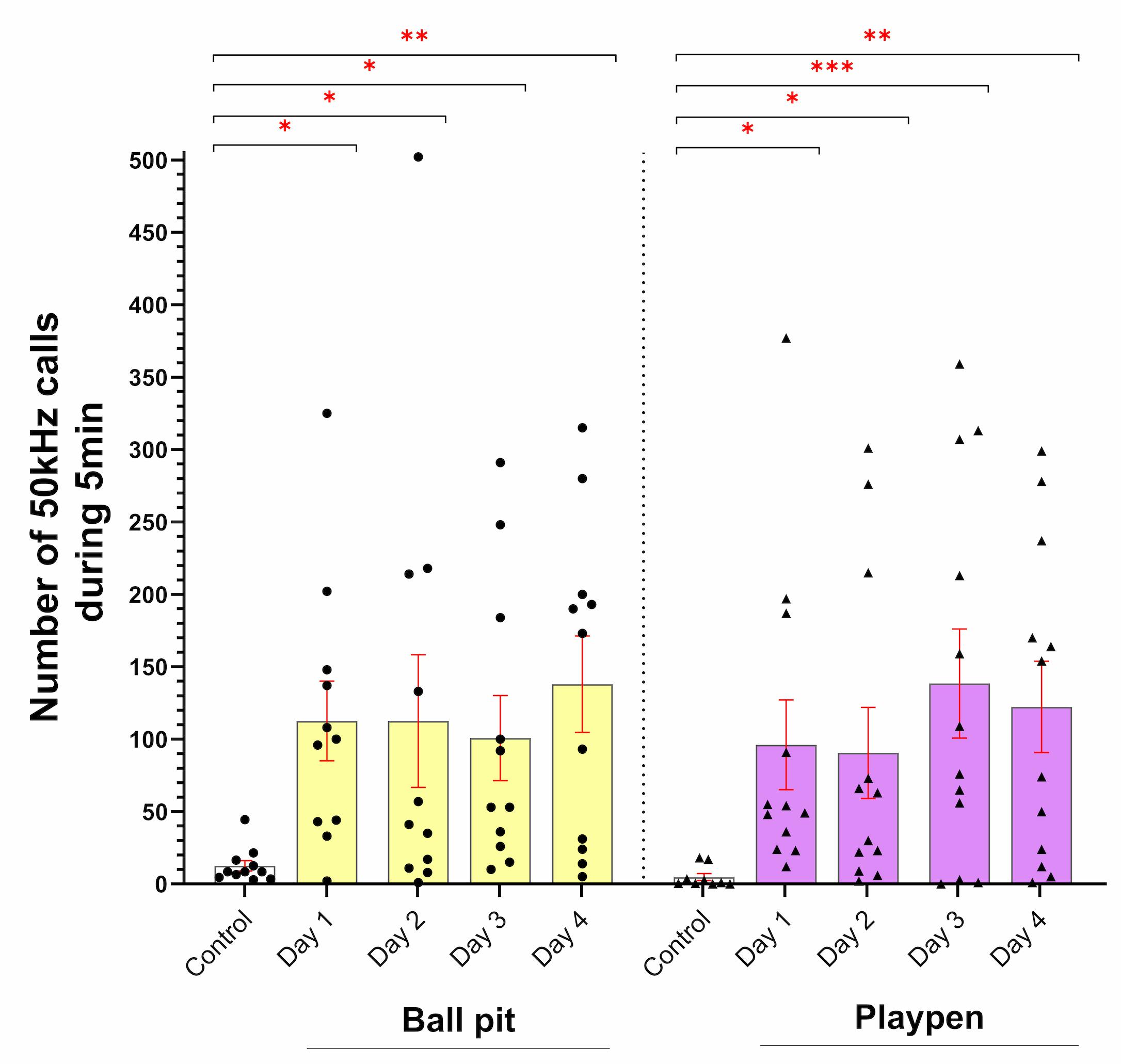
Rats emit 50kHz ultrasonic vocalisations in both the ball pit and playpen indicating a positive experience.
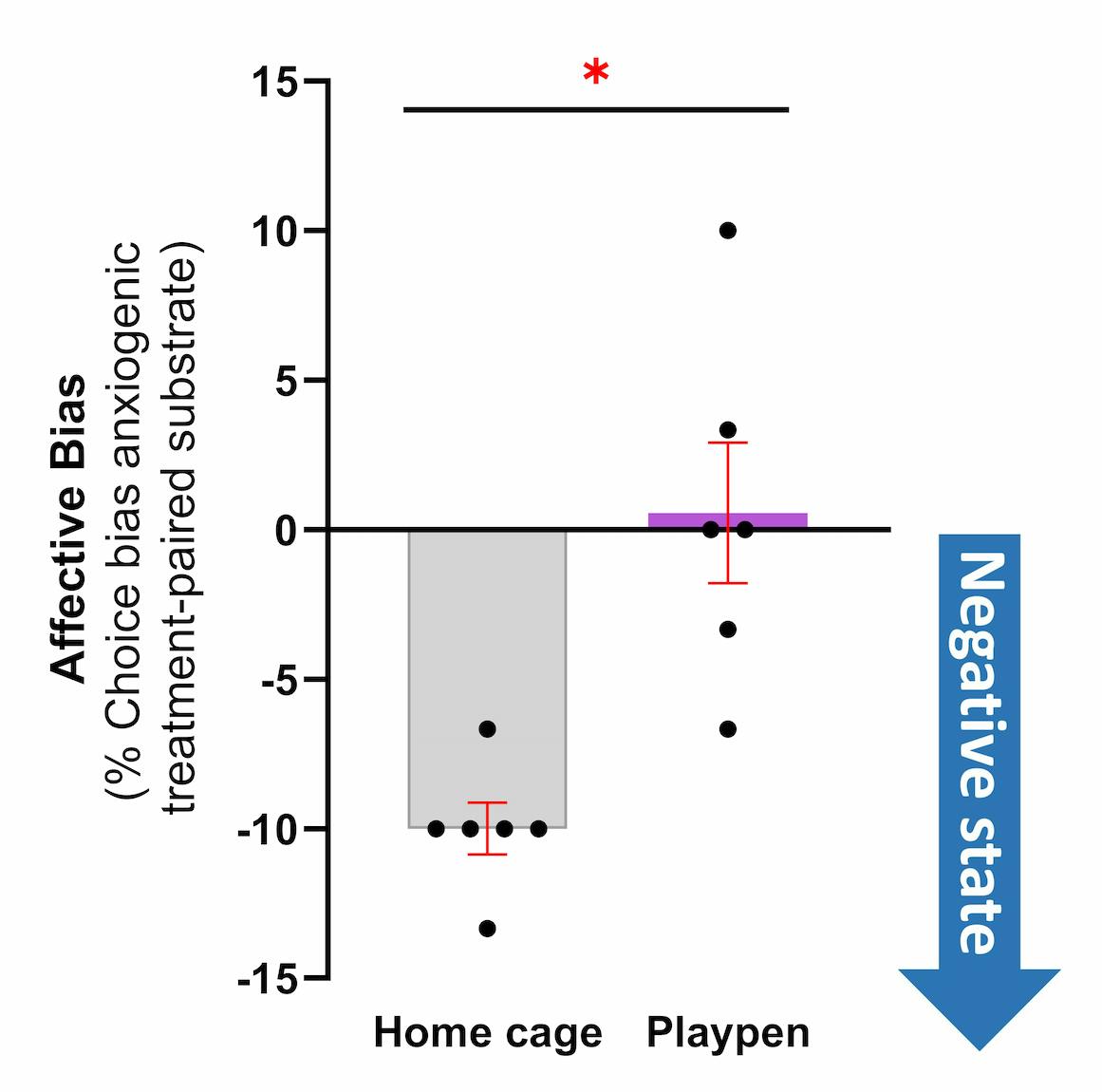
Giving rats access to a playpen after an acute negative affective experience prevents the formation of a negative affective bias suggesting the welfare impacts are reduced.